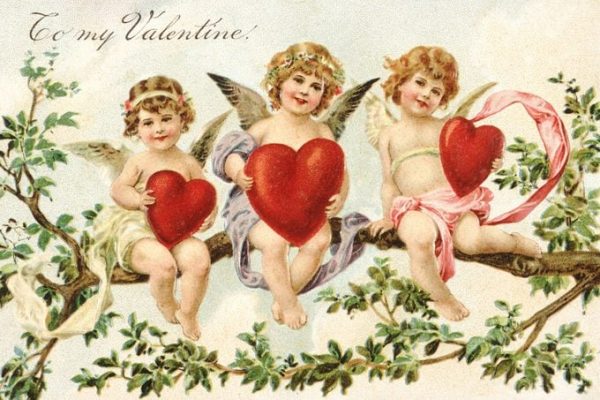
February 14 marks the celebration of Valentine’s Day. Roman mythology has been a great influence on many of the things we tend to do on this day. Many modern elements of this celebration, such as Cupid, the goddess Juno, and Lupa, as well as the overall sense of appreciation and love, derive from he Romans. In fact, the Romans played a significant role in shaping what we now recognize as Valentine’s Day.
Origin of Cupid and Lupercalia
In ancient books of Roman mythology, Cupid was the son of Mars, the god of war, and Venus, the goddess of love. Cupid’s name derives from the Latin word ‘Cupido,’ which translates to ‘desire.’ Cupid is known for spreading love, impulse, and attraction. Widely celebrated throughout the month of February, he is often depicted as a childlike cherub with a magical bow and arrow whose powers make people fall in love. His mischievous and playful personality symbolizes the innocent and blind nature of love.

Cupid’s symbolism is embraced at the festival of Lupercalia, which was celebrated on February 15. Lupercalia was a Pagan festival originally dedicated to promoting fertility, purification, and health in the city of Rome. It was also widely celebrated as the ‘festival of love,’ as many men and women were paired through a lottery system, attracting opposite pairs like Cupid did. At this festival, animal sacrifices took place in the cave of Lupercal, followed by a large feast of roasted goat meat. After the feast, men and women would run around and whip each other with goat hides, believing it would bring fertility. Lupercalia was abolished in the 5th century CE due to the Pagan holiday being seen as very violent and threatening to the Christian church. Despite its chaotic nature, historians recognize Lupercalia as one of the first festivals associated with love and pairing.

Juno & Lupa
There are many love gods and goddesses in Rome. Besides Cupid, Juno and Lupa were prominent figures in the Lupercalia celebration. Juno, the goddess of marriage and children, shaped the rituals practiced at this festival. The fertility customs were often believed to be in commemoration of Juno, embodying her essence as a way to worship her. These sacrifices were seen as a way to receive a blessing from the goddess.
Lupa also greatly impacted the celebration. The name of the festival Lupercalia was derived from the goddess’ name, which means ‘she-wolf.’ This is why most of the practices included animalistic elements, like sacrifices, as Lupa was depicted as a female wolf, the exact translation of her name. Lupa was also widely worshipped according to the legend that she nursed Romulus and Remus, the founders of Rome.

Conclusion
Rome and Valentine’s Day show a great link to how we still celebrate today. Things like gift exchanging and showing loving regard towards each other are extremely similar to the practices of honoring Cupid, Juno, and the worshiping events in Lupercalia. Even Cupid’s arrows of love have influenced how we symbolize affection on this day. So, the next time you exchange things like heartfelt cards, gifts, flowers, or candy, remember the ancient customs that have guided us to the current state of Valentine’s Day.

Works Cited:
- Encyclopedia Britannica, inc. (2025, January 24). Juno. Encyclopædia Britannica. https://www.britannica.com/topic/Juno-Roman-goddess
- Lupercalia and its relationship to Valentine’s day. The Vindolanda Trust. (2022, November 17). https://www.vindolanda.com/blog/lupercalia
- Wikimedia Foundation. (2025, January 27). She-wolf (roman mythology). Wikipedia. https://en.wikipedia.org/wiki/She-wolf_(Roman_mythology)
- Heerma, W. (2015, February 5). The truth behind Valentine’s day. Home Page. https://pcg.church/articles/1236/the-truth-behind-valentine-s-day
- Juno the roman goddess of marriage | facts, mythology & symbols – lesson | study.com. (n.d.). https://study-com.translate.goog/academy/lesson/juno-roman-goddess-of-marriage-importance-mythology.html?_x_tr_sl=en&_x_tr_tl=pt&_x_tr_hl=pt&_x_tr_pto=tc




